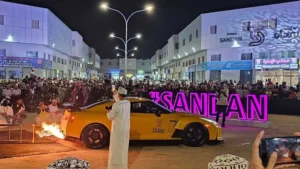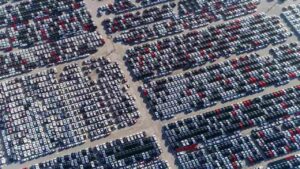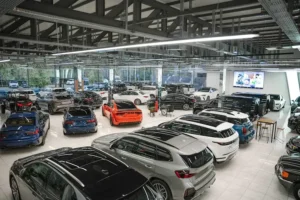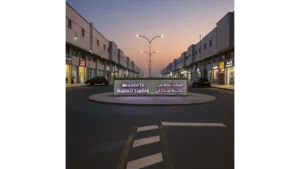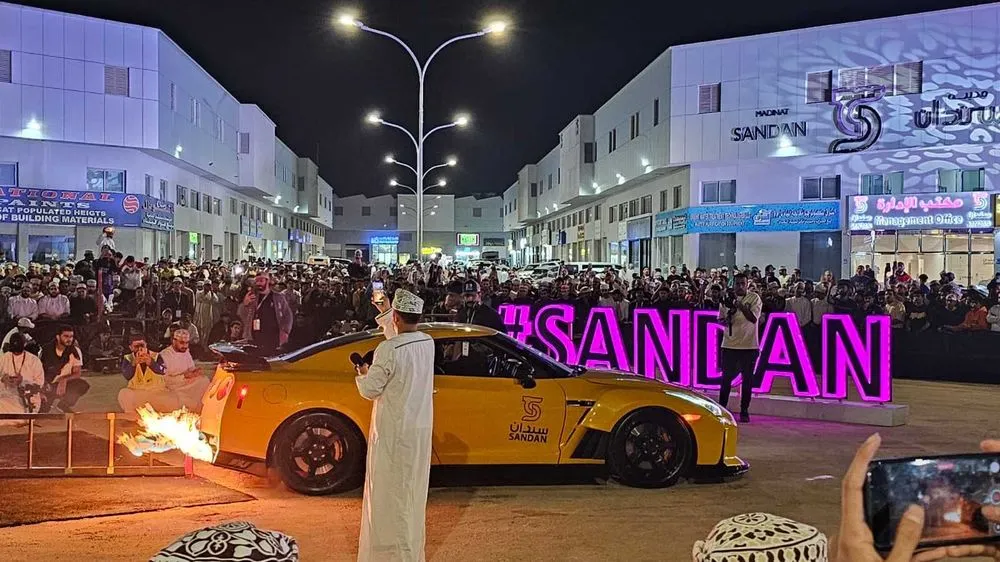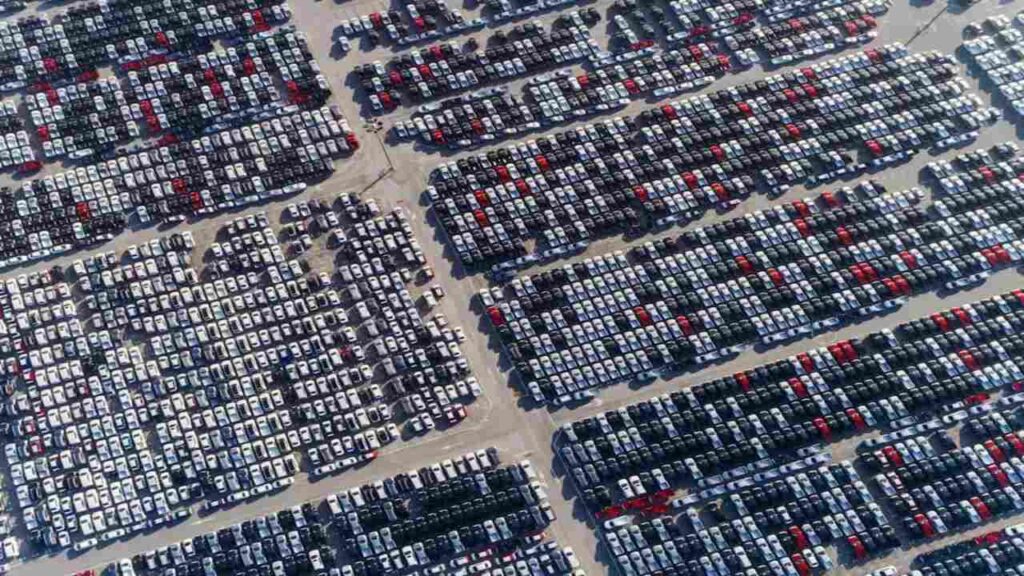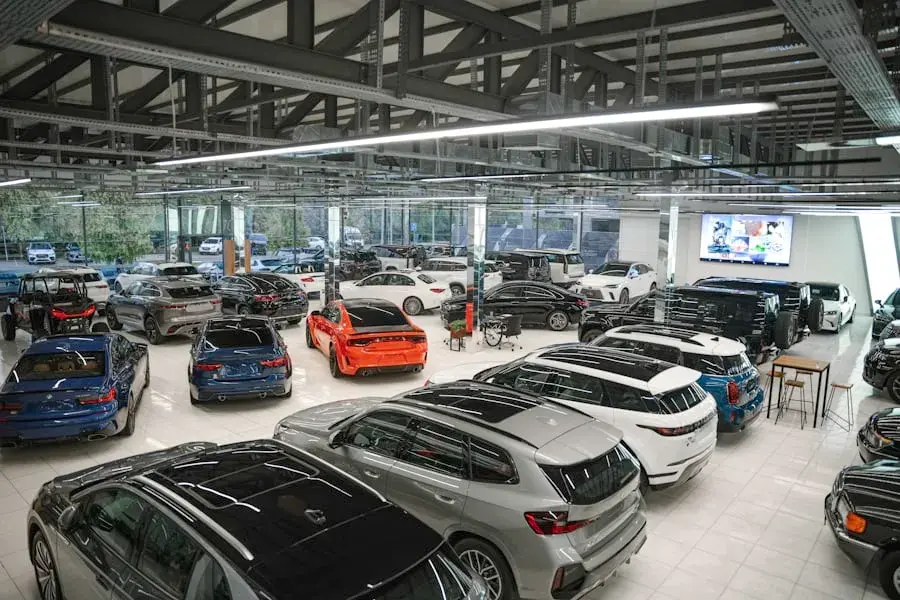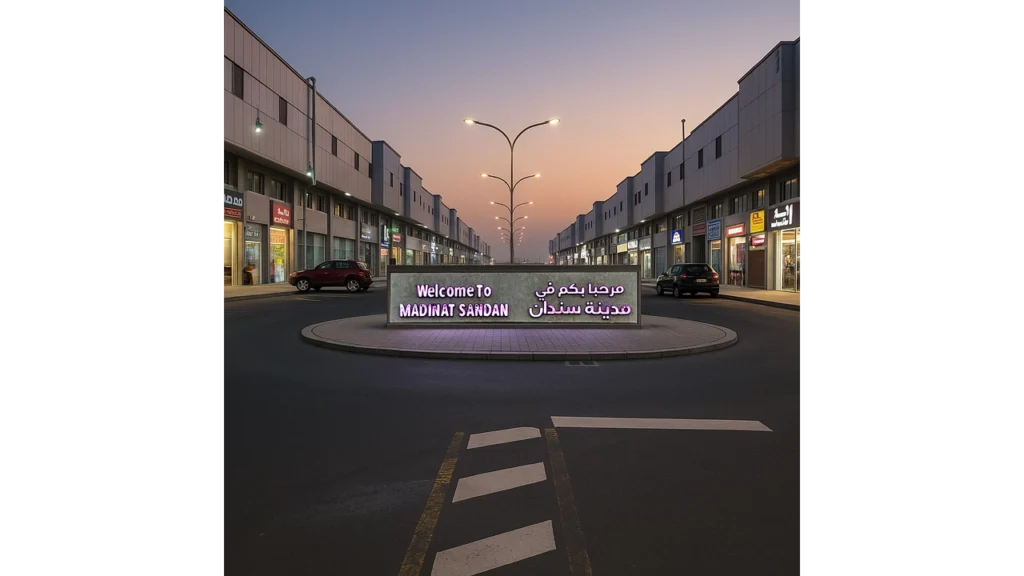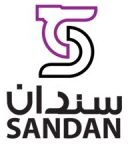Introduction
Sandan Industrial City sits at the intersection of Oman’s industrial policy and private real estate innovation, positioning itself as a purpose-built ecosystem for automotive trades, light manufacturing, logistics, and trade showrooms. The concept threads together revenue-producing units with the daily functions enterprises need to operate at speed: workshop bays next to parts suppliers, warehousing near arterial roads, and service outlets within walking distance of staff housing. This co-location effect reduces transaction time, shortens supply loops, and creates network value across occupant types.
For investors, the proposition revolves around predictable infrastructure, legal clarity, and demand from Oman’s expanding non-oil economy. The site’s proximity to Muscat and national corridors brings freight and retail catchments within short drive times, while on-plot services lower the ramp-up period from fit-out to first transactions. Regulatory pathways in Oman further shape feasibility, from foreign ownership allowances to corporate tax considerations. The result is an industrial city model that functions less like a dispersed zone and more like a tightly organized platform where tenants exchange goods, services, and labor inside one address.
Market signals point to sustained interest in automotive and construction-linked trades, with warehousing and last-mile logistics acting as connective tissue. A phased development roadmap aims to match supply with absorption to keep vacancy risk contained. The following sections unpack the project’s structure, site logic, infrastructure stack, and facilities, translating master-planning claims into investor-relevant checkpoints such as utility capacity, services reliability, and activation timelines.
Key Takeaways / TLDR
- Integrated industrial city linking automotive, building-materials, warehousing, and light industry into one commercial address.
- Site logic prioritizes short drive times to Muscat and national freight corridors, improving turnover speed.
- Infrastructure and services are designed to compress time to revenue by reducing off-site dependencies.
- Ownership and licensing frameworks in Oman shape entry models, exit options, and capital protection.
- Phased delivery aligns new stock with demand to limit vacancy spikes and stabilize yields.
- Facilities mix includes showrooms, workshops, warehouses, retail, and community services for workforce continuity.
- Investors should evaluate utility headroom, access roads, and on-site service depth to validate operational resilience.
Table of Contents
Overview of Sandan Industrial City
1. Project Genesis and Developer
Sandan Industrial City emerged as a privately led industrial-real-estate platform built to concentrate automotive commerce and light industry in one planned environment. The developer configured plots, circulation, and utilities around usage patterns common to repair, trade, and storage, so tenants can transact without leaving the district. Capital formation focused on deliverable infrastructure first, then on modular units that suit micro, small, and medium enterprises alongside larger anchors. Governance emphasizes service reliability, standardized plot documentation, and a leasing or freehold pathway that supports bankable transactions.
2. Location and Connectivity
The city is positioned near the Muscat metropolitan gravity while drawing reach from national expressways. Freight inflows connect to ports and border routes, and outflows reach retail clusters across Greater Muscat. Access roads feed internal spines that separate heavy movement from visitor traffic to limit congestion at loading points. This geometry helps workshops and showrooms receive parts and vehicles without disrupting pedestrian-scale retail.
3. Scale, Phasing, and Current Status
The master plan allocates land into functional belts: automotive workshops and showrooms, building-materials and trade galleries, light industrial sheds, logistics yards, and residential or service parcels. Phasing advances in steps tied to utility upgrades and road completions so that each tranche operates as a self-sufficient cluster. Early phases prioritize high-demand uses such as automotive services and materials trade to generate footfall and recurring cash flow. Subsequent phases deepen warehousing and ancillary services, adding capacity only as absorption data supports it. This cadence tempers speculative oversupply and anchors valuation to realized demand.
Infrastructure, Utilities, and Facilities
1. Core Infrastructure
Internal roads are engineered to separate heavy vehicles from visitor lanes, with turning radii and loading aprons sized for transport trucks. Stormwater drainage and site grading manage seasonal flows to keep workshops and showrooms dry during peak rainfall. Wayfinding signage and standardized setbacks maintain sightlines for retail frontage while preserving fire-lane access for emergency vehicles. Access junctions to external highways are designed to accommodate peak arrival waves from auctions, deliveries, and retail events.
2. Utilities and Services
Power distribution provides three practical levers for investors: baseline capacity for typical workshop loads, upgrade pathways for machinery-intensive tenants, and redundancy provisions that limit downtime. Water and wastewater networks serve both industrial and sanitary demand with pre-treatment options where required by activity type. Telecom connectivity supports payment systems, diagnostics, security monitoring, and marketplace listings. Solid waste handling and recyclable material streams reduce cross-site haulage and keep back-of-house operations contained within planned yards.
3. Facilities and Support Services
The city integrates a set of usage-multipliers that raise unit productivity. Automotive-specific assets such as inspection lanes, testing facilities, and auction or event space create periodic traffic spikes that showroom tenants can monetize. Retail and food services support dwell time for visitors and staff, improving capture of accessory sales. Administrative touchpoints for licensing, banking, insurance, and utilities compress setup cycles. Residential units and worker amenities contribute to labor stability, reducing daily commute friction and absenteeism. Together, these facilities convert the site from a collection of units into a trading ecosystem with repeat footfall, faster parts turnaround, and steady workshop utilization.
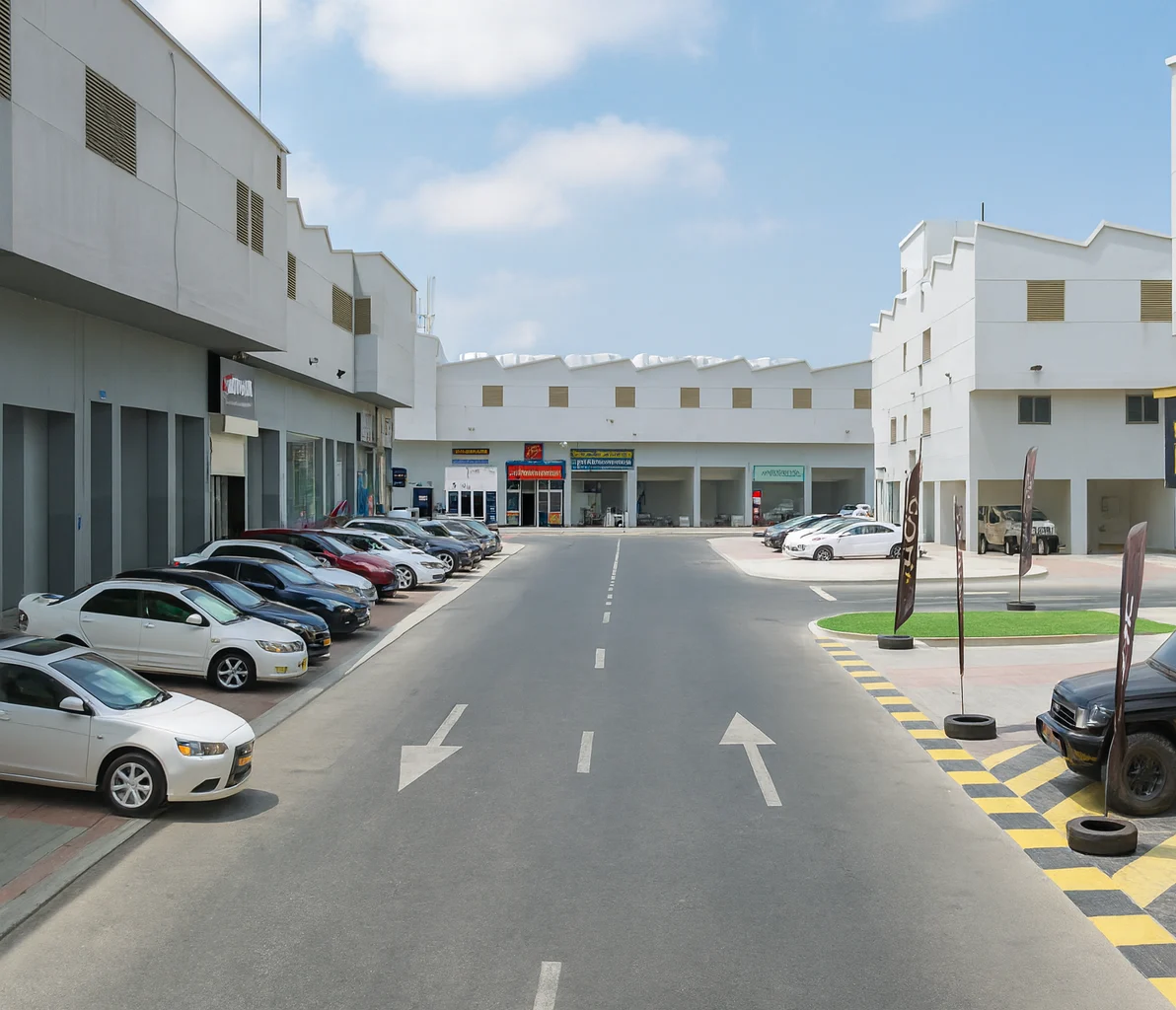
Regulatory, Legal, and Incentives Framework
A clear regulatory path decides speed to operation and long-run defensibility. Sandan Industrial City aligns with Oman’s national investment regime, which recognizes freehold or long leasehold models depending on parcel type and applicable statutes. Transaction security centers on verified title, registered contracts, and utility service agreements that define delivery timelines and responsibilities. Investors typically confirm plot purpose, build coverage, height limits, and environmental obligations at the reservation stage to avoid redesign cycles later.
Foreign participation has widened under Oman’s investment regulations, with many activities open to 100 percent foreign ownership. Capital repatriation and foreign currency flows are generally permitted through licensed banking channels, subject to tax compliance and company law requirements. Where sectoral lists apply, the on-site liaison function can clarify eligible activities and any partner requirements. The practical checkpoint is alignment between the intended activity code and the plot’s designated use.
Tax and customs treatment depends on corporate status and activity mix. Industrial machinery and raw materials may qualify for duty relief under specific programs when compliance criteria are met. Corporate income tax rules apply at the national level, with reliefs or holidays contingent on program eligibility rather than location alone. Investors often structure group entities to separate property holding from operations to optimize risk and reporting.
Licensing takes place in stages. Company formation and commercial registration precede construction and environmental permits. Design approvals confirm setbacks, fire access, utilities capacity, and waste handling. Fit-out and commissioning require inspections, particularly for workshops, showrooms, warehouses with racking, and any process involving chemicals or paint. Standard operating procedures for safety, noise, and effluents reduce the likelihood of compliance interruptions.
Frequently asked checks include which activities are permitted on automotive plots, how change-of-use requests are handled, and whether sub-leasing is allowed. Clarity on these predicates protects exit options. Investors who document handover conditions, insurance thresholds, and utility metering at the outset usually experience shorter activation delays and cleaner re-sale transactions.
Cost, Economics, and Financial Modeling
The investment story rests on transparent inputs and frictionless operations. Cost modeling opens with land or unit acquisition, legal fees, design and permitting, shell construction or fit-out, machinery, contingency, and pre-opening marketing. Utility connection and internal distribution add a one-time layer, while racking, lifts, compressors, or paint booths define activity-specific capex. A realistic contingency acknowledges imported equipment lead times and currency exposure.
Operating costs combine power, water, telecom, waste handling, security, facility maintenance, cleaning, and common area charges. Insurance, staff costs, and inventory finance belong in the monthly cash cycle alongside consumables such as oils, filters, fasteners, and packaging. Logistics pricing is modeled by vehicle type and frequency, linking to delivery slots and storage throughput.
Revenue architecture varies by use. Workshops monetize labor hours, diagnostics, and parts margins; showrooms target vehicle turnover and finance/insurance referral income; warehouses price on space, weight, and service level. Mixed-use footprints can stack these streams if layout and licensing allow. Conservative ramp assumptions help align breakeven with realistic occupancy and footfall.
A sample pro forma usually runs three scenarios. A base case assumes stable utility tariffs and planned occupancy; a downside bakes in slower demand and a 10 to 15 percent delay in commissioning; an upside adds cross-selling from cluster effects and a modest yield uplift from ancillary services. Sensitivities to test include power tariffs, parts lead times, staffing costs, and inventory carrying costs. Comparative benchmarking with regional industrial parks highlights relative input prices and expected yields.
Exit planning matters as much as entry. A forward sale to an income buyer requires verifiable leases, metered utilities, maintenance logs, and safety certifications. Strata management records and service charge history strengthen valuation. For owner-operators, refinancing options improve once a track record of throughput, utility stability, and safety compliance is evident.
Tenant Profiles, Market Demand, and Clusters
Demand concentrates where daily trade meets reliable infrastructure. Sandan Industrial City appeals to automotive enterprises such as repair workshops, body and paint facilities, tire and battery retailers, spare parts importers, and vehicle showrooms. Building-materials traders position heavy or bulky goods close to road spines for quick loading, while light manufacturers adopt standardized sheds for machining, fabrication, packaging, or assembly. Logistics operators occupy cross-docks and short-hold warehousing to support last-mile service into Muscat.
Segmentation sharpens site performance. Anchor showrooms drive periodic spikes from launches and promotions, feeding workshop bookings and accessory sales. Parts distributors provide just-in-time supply for independent garages, compressing repair turnaround. Body shops and detailing studios benefit from nearby paint suppliers and waste handling services. E-commerce fulfillment units leverage telecom resilience and parking geometry designed for frequent small-vehicle dispatches. Where regulations permit, EV diagnostics and charging hubs introduce a growing specialty stream.
Cluster logic converts proximity into margin. A visitor replacing tires can be cross-sold alignment, brake pads, or detailing within the same district. Construction contractors source tiles, sanitaryware, and timber from adjacent galleries and then move next door for logistics or packaging. Food and retail amenities extend dwell time, which lifts capture rates for discretionary purchases. Shared services such as inspection facilities, auction events, or training centers add rhythm to the calendar and predictable footfall to the ecosystem.
Common market questions include typical unit sizes for workshops versus showrooms, the share of tenants importing directly versus buying locally, and the split between B2B and retail trade. Another recurring query addresses weekend traffic patterns relative to staffing and security scheduling. A practical way to validate demand is to log observed transaction types by hour during peak weeks, then map them to access points and parking turnover. Locations that sustain high visit density with smooth truck movement signal a mature cluster where new entrants can plug into established flows.
Risk Analysis and Mitigation Strategies
Every industrial project encounters predictable and emergent risks that shape investor outcomes. In Sandan Industrial City, four main clusters define the risk profile: infrastructure readiness, regulatory interpretation, market absorption, and cost variability. Each carries different timing and exposure windows.
Infrastructure delays represent the most visible operational risk. These arise from phased construction, utility load tests, or road access coordination with municipal authorities. Developers typically mitigate through parallel scheduling, redundant access routes, and escrow structures that tie handover to completion certificates. Investors can further reduce exposure by conditioning payment milestones on verified service connections, not simply site grading.
Regulatory drift occurs when permitting sequences or compliance codes change mid-development. Oman’s industrial legislation is relatively stable, but individual sectors such as automotive and light manufacturing may encounter new safety or emissions requirements. Documentation that captures the regulatory baseline at approval and lists responsible agencies helps maintain continuity through any updates. On-site government liaison offices within Sandan shorten feedback loops between businesses and regulators, lowering downtime during transitions.
Market absorption risk relates to the pace at which workshops, warehouses, and showrooms fill. Early phases typically secure tenants through pre-sales to established automotive or construction-materials companies; subsequent phases rely on smaller entrants and independent operators. Monitoring lead-to-lease ratios, construction-start timelines, and footfall density across sectors allows course correction before oversupply materializes.
Cost volatility links to imported materials and energy pricing. Hedging via fixed-rate construction contracts or currency-matched supplier agreements stabilizes budgets. Energy-efficient equipment, waste reuse, and preventive maintenance mitigate operating cost inflation.
An emerging category is environmental risk—water use, waste oil handling, and noise exposure. Proper segregation systems, spill-prevention zones, and waste contracting satisfy inspection protocols and strengthen the city’s sustainability profile.
Investors adopting a documentation-first approach—capturing approvals, warranties, insurance certificates, and handover reports—translate compliance into valuation protection. With transparent utilities data and predictable operations, residual risk narrows to market dynamics rather than hidden liabilities.
Comparative Benchmarking and Competitive Edge
Understanding Sandan Industrial City’s position requires a direct comparison with Oman’s public industrial estates and nearby Gulf industrial hubs. Madayn-managed zones such as Rusayl or Sohar cater mainly to medium and heavy manufacturing; they emphasize export-oriented production and large parcels. Sandan differs by focusing on mixed-use plots tailored to automotive, logistics, and retail-adjacent industries that need immediate consumer access rather than port adjacency.
Against Oman’s free zones like Al-Mazyunah or Duqm, Sandan trades the advantage of tax exemptions for location efficiency. Duqm’s port and refinery attract heavy capital projects, while Sandan’s proximity to Muscat enables high transaction frequency. For small and medium enterprises, shorter transport cycles and immediate market access outweigh extended customs reliefs offered elsewhere.
Comparisons with UAE industrial clusters—Ras Al Khor, Al Quoz, or Sharjah Industrial Areas—show a narrower cost base in Sandan. Land pricing, service charges, and energy tariffs are typically lower, and ownership flexibility has improved with Omani freehold reforms. These differences create a measurable spread in yield, especially for investors targeting recurring rent from workshops and showrooms.
Sandan’s private-sector governance adds agility. Decision pathways on design, leasing, or infrastructure upgrades remain faster than in government-run zones. The presence of residential and community facilities within the perimeter also differentiates it from purely industrial estates, allowing a live-work model that enhances labor retention and business continuity.
Strategically, Sandan operates as a bridging node: near enough to Muscat’s retail gravity to feed trade, yet insulated from urban congestion. This locational equilibrium grants businesses logistical advantages without premium city-center pricing. Its competitive edge rests on ecosystem coherence—automotive, building materials, warehousing, and retail stitched into one networked geography that shortens supply loops and compounds occupancy stability.
Future Outlook and Growth Trajectories
Sandan Industrial City sits on the demand line where automotive trade, light manufacturing, and logistics converge around Muscat’s expanding catchment. Near-term traction is expected from vehicle aftersales, spare-parts consolidation, and fit-out contractors serving residential and tourism pipelines. As Oman’s retail and e-commerce footprint widens, last-mile distribution and short-hold warehousing should deepen, reinforcing workshop and showroom turnover. The planned expansion of automotive showrooms indicates confidence in periodic, event-driven footfall that radiates to nearby services such as detailing, diagnostics, and finance partners.
Medium-term growth links to equipment upgrades and process standardization. Workshops increasingly adopt digital diagnostics, paint booths with emissions controls, and inventory systems synced to importer stock, raising throughput per square meter. Building-materials traders benefit from tighter SKU management and just-in-time restocking from Muscat and Sohar corridors. Logistics operators raise delivery cadence while maintaining margin through route density and predictable off-peak loading windows.
Energy and sustainability trends have directional impact. Efficient HVAC, LED retrofits, air compressors with variable frequency drives, and solvent recycling reduce operating volatility tied to power and consumables. EV-adjacent services may emerge as regulations and consumer adoption gather pace, including battery testing, high-voltage safety bays, and charging nodes at showroom clusters. These uses require codified safety procedures yet deliver differentiation once standardized.
Capital formation options could broaden. Stabilized, income-producing assets within Sandan may suit REIT portfolios or sukuk structures once tenancy records mature and service-charge governance proves durable. For owner-operators, refinancing windows open after consistent utility metering, safety audits, and audited revenues demonstrate operating discipline. The city’s long-run trajectory favors ecosystem depth: tighter supplier–workshop loops, higher diagnostic complexity, and more resilient logistics, each compounding location advantage without inflating occupancy costs. Execution quality on phasing, utilities headroom, and access roads remains the practical hinge for translating planned growth into persistent yields.
Conclusion and Actionable Next Steps
Sandan Industrial City delivers a platform where location efficiency and sector clustering support steady cash generation. The project’s design logic shortens supply loops for automotive and construction-linked trades, while utility planning and on-site services compress time from fit-out to first revenue. Regulatory clarity and widening foreign ownership options improve capital security, and phased delivery helps balance new stock with verified demand, limiting vacancy spikes.
A practical route to entry begins with plot matching by activity and access geometry, followed by documentary checks on title, purpose, and encumbrances. Capacity letters for power and water precede design approvals and environmental clearances. Construction sequencing benefits from early confirmation of utility kiosks and metering plans, while operator safety manuals and insurance policies prepare the unit for commissioning audits. Investors targeting rental income should align leases with service-charge frameworks and maintenance schedules to protect net yields.
Risk control remains a matter of documentation and measurement. Tying payment milestones to service activation, logging utility performance, and maintaining inspection records translate directly into valuation resilience. Monitoring lead-to-lease ratios, footfall density, and loading-bay turnover offers early signals on market absorption, enabling timely adjustments in fit-out scope or pricing.
Looking forward, deeper adoption of diagnostics, inventory systems, and efficiency retrofits can elevate output per square meter without raising payroll in lockstep. Emerging EV-adjacent services and standardized waste-handling practices position the district for the next cycle of regulatory and consumer change. With maturing tenancy data and consistent service delivery, Sandan assets are candidates for institutional capital, turning operational discipline into liquidity options and stable, tradable income streams.
FAQs
1. What is Sandan Industrial City?
Sandan Industrial City is a privately developed industrial hub in Oman designed to combine automotive, light manufacturing, trade, and logistics within a single integrated ecosystem close to Muscat.
2. What investment opportunities are available in Sandan City?
Investors can acquire freehold or leasehold plots for workshops, warehouses, showrooms, and light industrial units, with potential for steady rental yields and capital appreciation.
3. What are the main advantages of investing in Sandan Industrial City?
Key advantages include strategic location near Muscat, reliable infrastructure, flexible ownership, accessible utilities, and integration with Oman’s Vision 2040 economic diversification plan.
4. Who can invest in Sandan Industrial City?
Both local and foreign investors can participate. Oman’s investment regulations permit 100% foreign ownership for many sectors, enabling easy entry and capital repatriation.
5. What facilities and services are provided inside Sandan City?
The city offers complete utilities, road networks, telecommunications, drainage systems, and essential on-site amenities such as banks, clinics, restaurants, and residential housing for workers.


